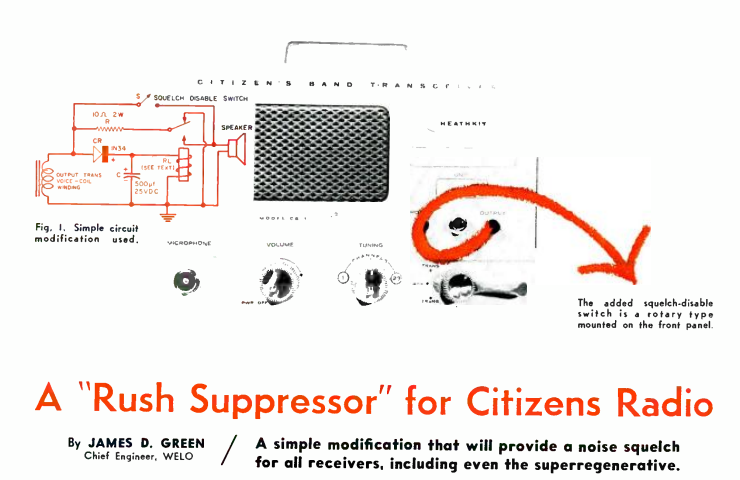 Sixty years ago this month, the January 1960 issue of Electronics World carried a simple modification for the venerable Benton Harbor Lunchbox, in this case, the Model CB-1 CB transceiver.
Sixty years ago this month, the January 1960 issue of Electronics World carried a simple modification for the venerable Benton Harbor Lunchbox, in this case, the Model CB-1 CB transceiver.
James Green, the Chief Engineer of WELO, Tupelo, MS. The station had purchased two of the sets for communicating with one of the station’s engineers “living in a rural area devoid of telephone services.” For that reason, the set was going to be in operation for 18 hours a day, and the constant rushing noise of the superregenerative receiver “simply could not be tolerated.”
Green came up with a simple solution to the problem. Contrary to what one might think, the voice peaks of a received signal are louder than the rushing sound. Therefore, he simply used a sensitive relay from the rectified output of the audio output transformer. Then, the volume was turned to just to the point where the voltage was too low to energize the relay coil. At that point, the relay switched the speaker out of the circuit. When a call came in, the voice peaks generated a higher voltage, and the speaker kicked in. A capacitor kept the relay engaged for a short time so that the relay wouldn’t chatter between words.
A switch bypassed the squelch, so that the volume could be turned up or down.
The remarkable thing about this article is that a rig as simple as the CB-1 was actually put to a business use. For those who malign CB, I’ve noticed that 11 meters is so quiet these days that it can probably be used for useful communications, just like it was 60 years ago. As shown below, CB rigs are dirt cheap, and an antenna can be made for next to nothing. For short-distance communications, they can be useful for many applications.
Some links on this site are affiliate links, meaning that this site earns a small advertising fee if you make a purchase after clicking on the link.

